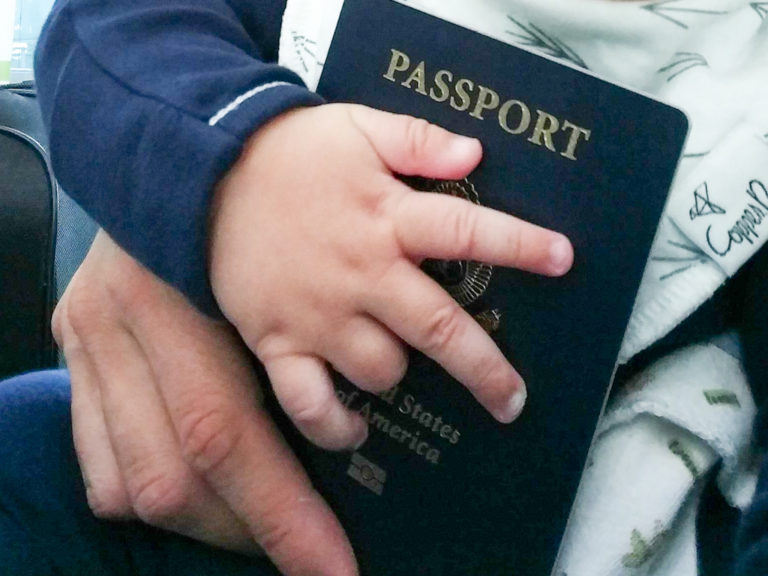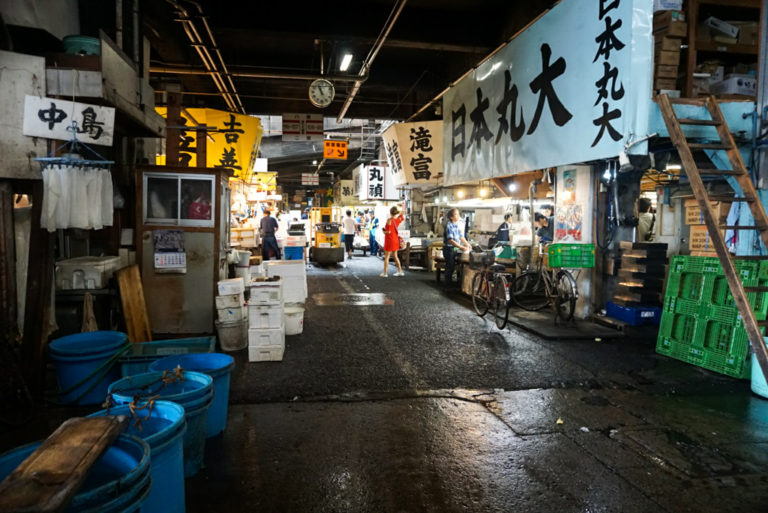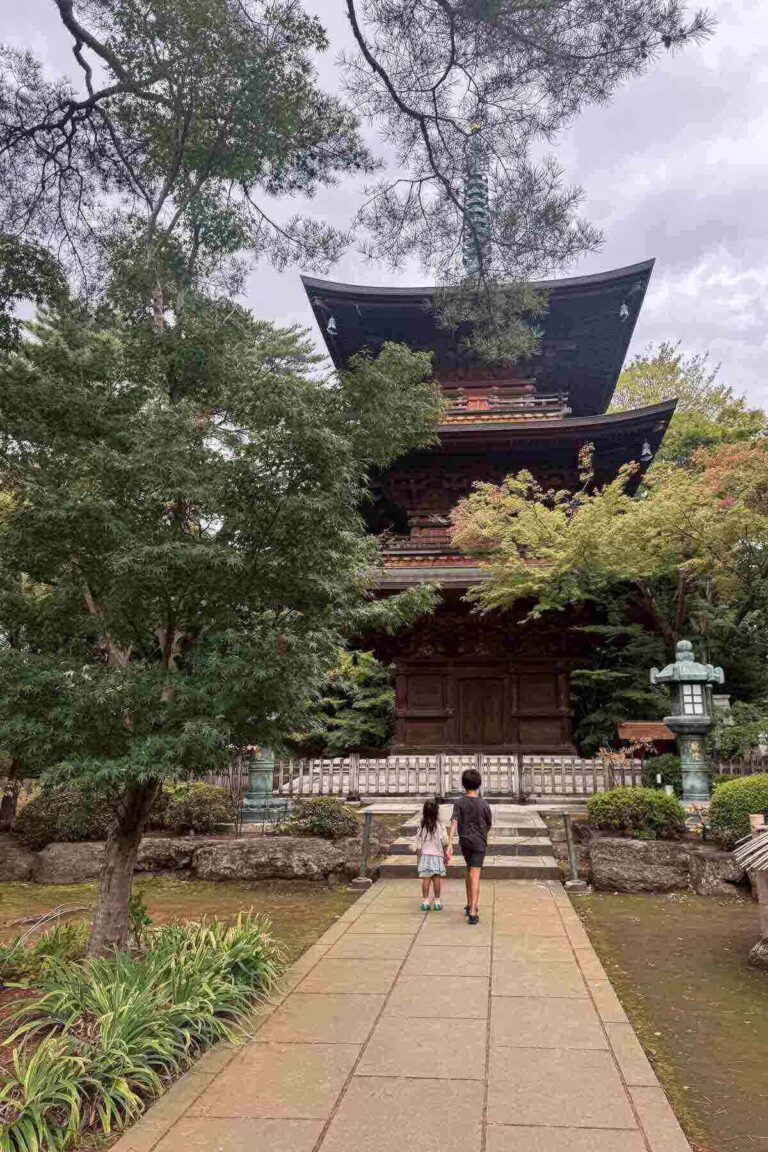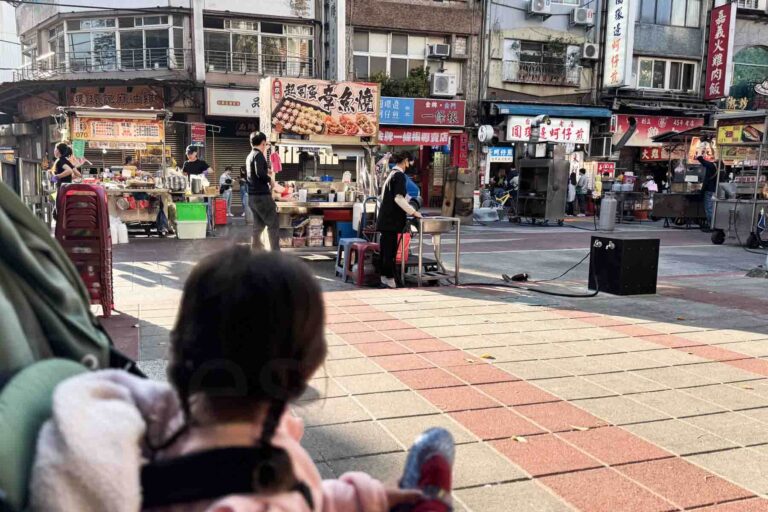The Stealthy Black Cat: Japan’s Luggage Delivery for Families
Carrying suitcases through train stations, up and down flights of stairs, while shepherding kids is not exactly my idea of fun. On our recent trip to Japan, I finally tried something I’d heard about for years: Japan’s luggage delivery service. It turned out to be one of the best Japan travel hacks we’ve ever encountered.
Before going, I couldn’t quite wrap my head around how it worked or whether it would actually make life easier. Honestly, it seemed like it was going to add more to the mental load of packing. But once we dropped our bags at the Yamato Transport counter at Narita Airport and later found them waiting in our Osaka hotel room, I was amazed.
We ended up using Yamato Takkyubin several times between airports and hotels, and it made a huge difference. No battling baggage on the Shinkansen, no hauling heavy bags up stairs and through crowded stations—just smoother, easier travel. Don’t we all need more of this when traveling with kids?
In this post, I’ll share exactly how the Yamato luggage delivery service works, what it costs, and how to plan for it so you can travel lighter on your family trip.
Affiliate Disclosure: Familee Travel contains affiliate links and is a member of the Amazon Associates Program, we may earn commissions from qualifying purchases at no additional cost to you.
In a rush? Pin this or email it to yourself to read later! (Psst! Use the buttons at the very top or bottom of this post for ease.)
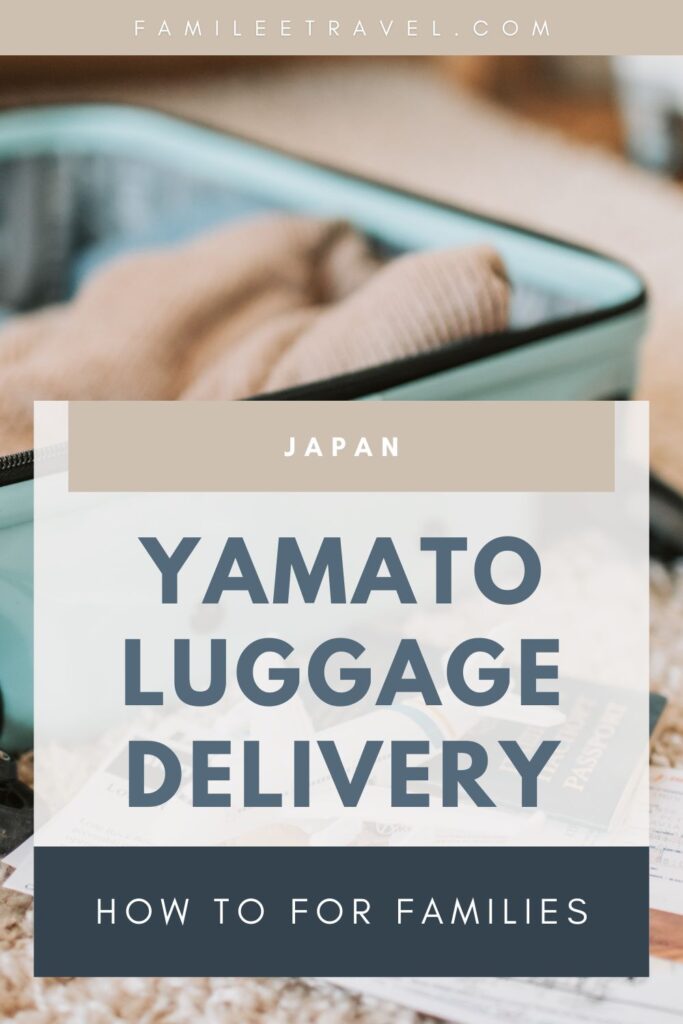
What Is Japan’s Luggage Delivery Service (Takkyubin)?
Luggage delivery in Japan is known locally as takuhaibin or takkyubin (pronounced “tah-kyoo-been”) or TA-Q-BIN by Yamato. It is one of those brilliant systems that makes us feel like Japan is living in the future.
Takkyubin is a door-to-door baggage forwarding service that lets you send your suitcases almost anywhere in the country—between airports, hotels, or even convenience stores.
The most well-known provider is Yamato Transport, recognizable by its yellow branding with the famous black cat logo carrying a kitten. Once you notice it, you’ll start spotting Yamato trucks, delivery workers, and signs everywhere.
The black cat has become a fun little symbol of travel convenience (and good luck!) throughout Japan. It became a fun eye-spy game with our kids. I see another Yamato!
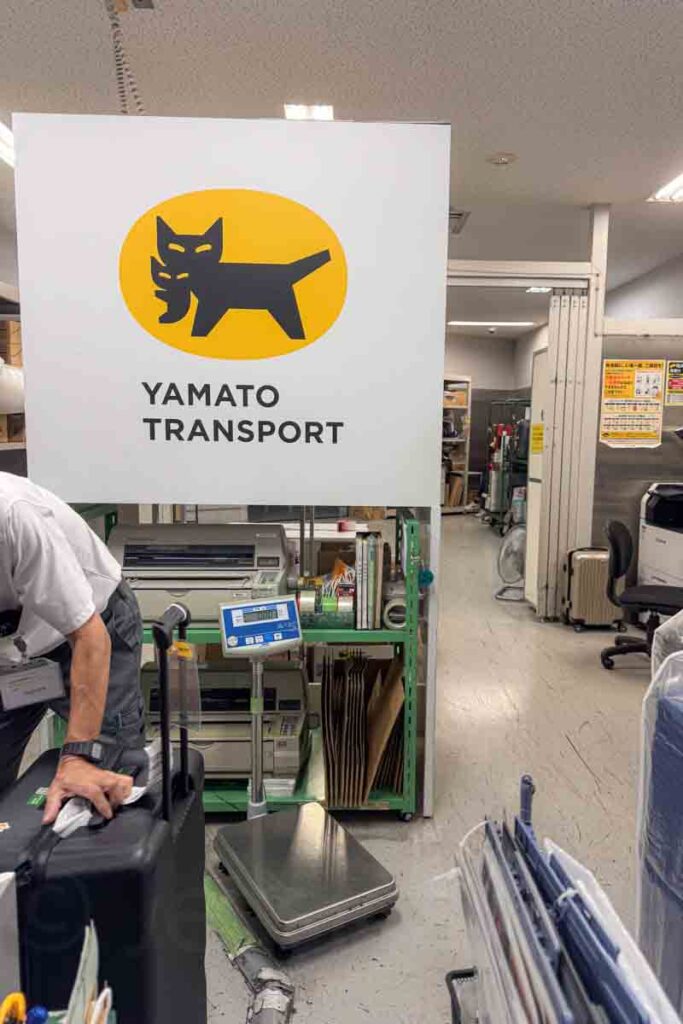
There are several different takkyubin services, not only Yamato. Sagawa Express, JAL ABC, Japan Post, LuggAgent (through Klook), and ShipGo also provide similar services.
You hand off your suitcase at a Yamato counter or partner location, fill out a short form with your destination and desired delivery date, and then go about your trip hands-free. Your luggage is safely transported to meet you at your next stop, often the very next day.
You’ll find Yamato counters at major airports, most hotels, and even at convenience stores like 7-Eleven, FamilyMart, and New Days. Lawson no longer partners with Yamato. The system is reliable, affordable, and incredibly organized.
For families traveling with kids, it’s a total game-changer.
How it works at a glance
- Separate your luggage, keep your essentials with you, and pack away what you won’t need until later
- Find a Yamato counter
- Drop off your bags, they will measure and weigh them
- Fill out the form
- Pay the fee
- Skip out feeling lighter
- Later, pick up your bags at your delivery destination
How We Used Yamato During Our Japan Trip
We first decided to try Yamato right after landing at Narita Airport. After a long overnight flight from Los Angeles, the idea of dragging multiple suitcases and tired kids through Tokyo’s train stations did not sound appealing. So before heading into the city, we rolled our bags straight to the Yamato Transport counter inside the airport.
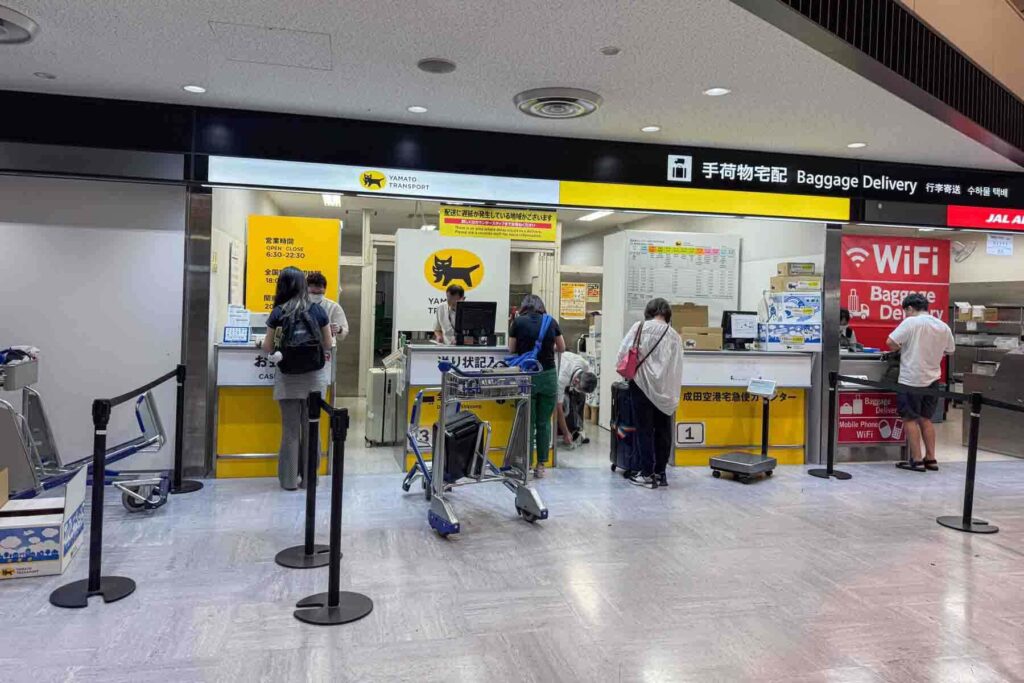
The process was quick. The staff asked where we wanted to send our luggage, when we needed it to arrive, and gave us a short form to fill out. I wrote our contact details, hotel in Osaka, and the date we’d be checking in.
They measured and weighed our bags, added protective covers, and printed the shipping labels on the spot. Lastly, I paid with a credit card. Within ten minutes, our large suitcases were out of our hands and on their way to Osaka.
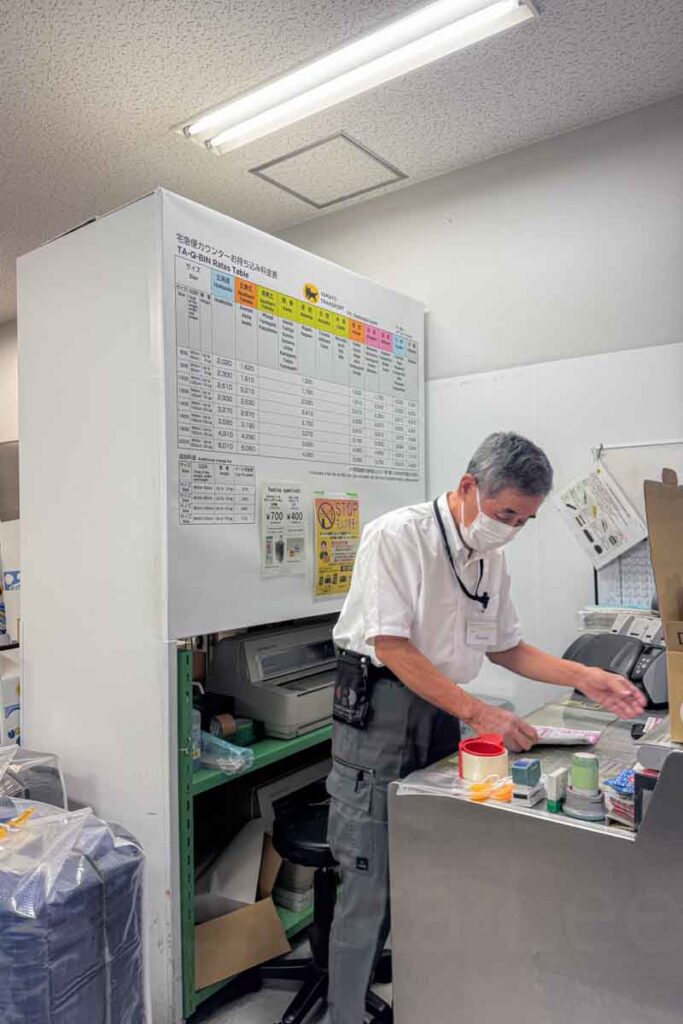
We spent the next two nights in Tokyo with only our small carry-on suitcase and daypacks, which held a few days’ worth of clothes, toiletries, medications, and electronics. It was such a relief not having to manage five people’s worth of luggage through the busy city.
When we arrived at Mimaru Osaka Namba Station a few days later, we opened the door to our hotel room, and there they were waiting neatly inside. It felt like magic.
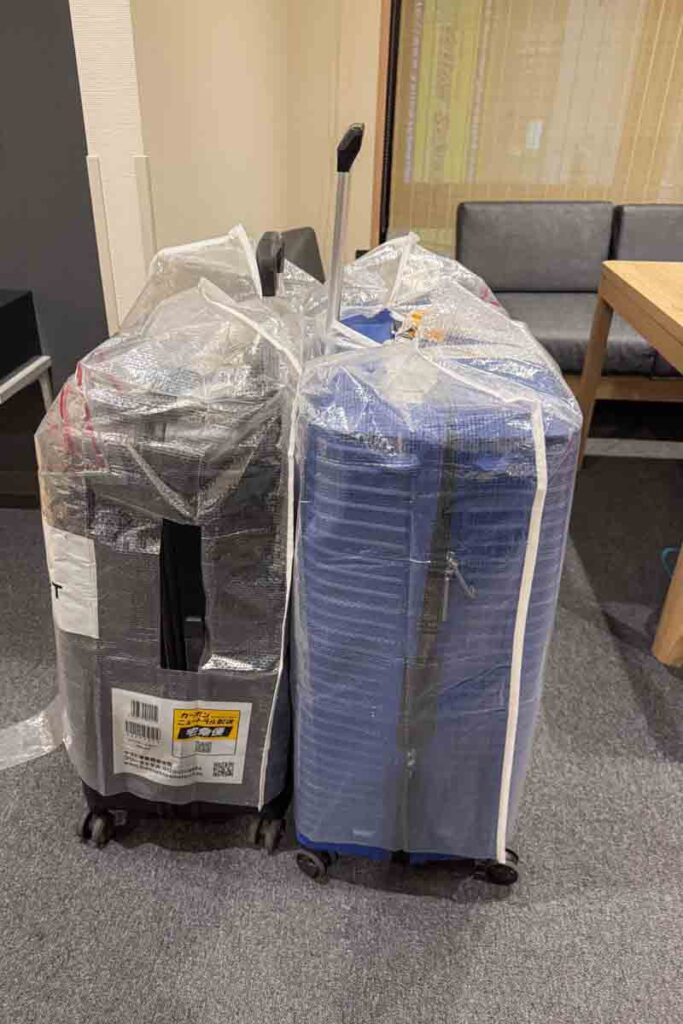
From that point on, we were hooked.
We used Yamato again to send our luggage from Osaka to Haneda Airport, and later from Haneda to Narita Airport at the end of our trip. Each time, the process got easier. At our Osaka hotel, the front desk handled almost everything for us. I simply filled out a quick online form that generated a QR code, which they scanned to print the shipping label. Yamato picked up the bags directly from the hotel lobby.
Not having to carry all our luggage on the Shinkansen or through metro transfers saved us a ton of energy and sanity. Traveling through Japan with kids already requires enough coordination; Yamato lightened our load.
How to Arrange Luggage Delivery in Japan
Once you understand how Yamato works, arranging luggage delivery in Japan is easy. The system is designed to be tourist-friendly, even if you don’t speak Japanese. You can arrange a transfer at the airport, through your hotel, or even at a convenience store.
The form was mostly in Japanese, but a few entry fields had English. Through pointing, a little English, and Google Translate, I had no issues with filling out the form.
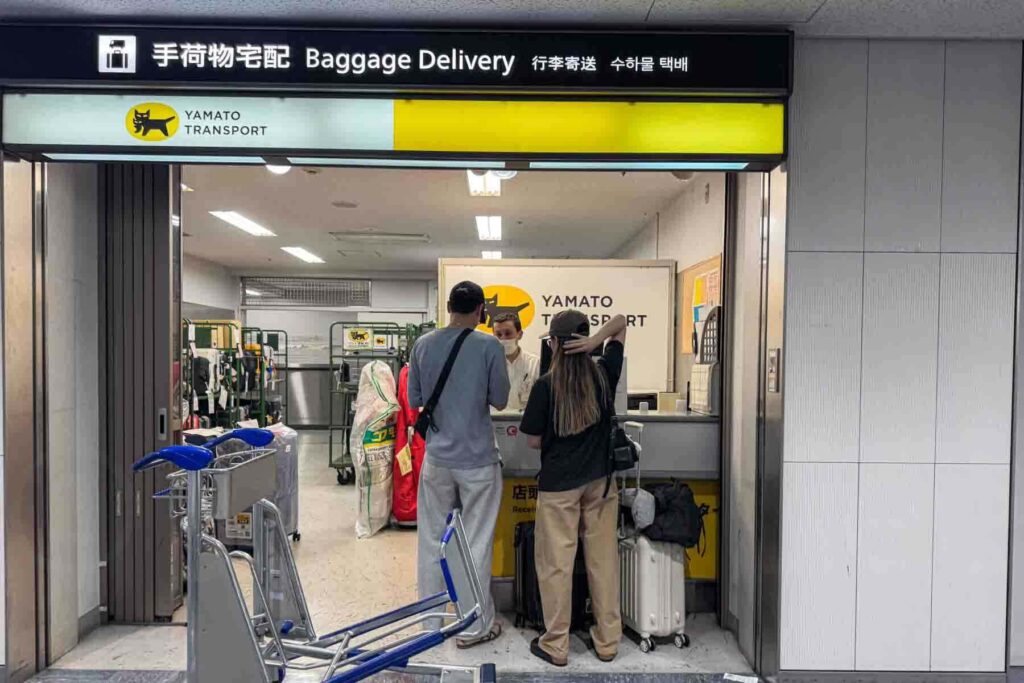
At the Airport
Yamato has counters at all major airports, including Narita, Haneda, and Kansai (Osaka). After you collect your checked bags and go through customs (if international), look for the yellow-and-black Yamato Transport (Black Cat) sign.
At the counter, you’ll fill out a short form with your:
- Name and contact information
- Destination address (hotel or airport)
- Delivery date (usually next-day or two-day delivery)
The staff will measure and weigh your bags, then give you a receipt with tracking numbers. Keep it safe, as you’ll need it to check the delivery status and later collect your bags. You can pay by cash, IC, Suica, or credit card.
Most routes within Japan offer next-day delivery, but depending on distance and drop-off time, sometimes they can make a same-day delivery, and other times it can take up to two days. For example, sending luggage from Tokyo to Osaka is typically overnight, while remote islands like Okinawa take longer.
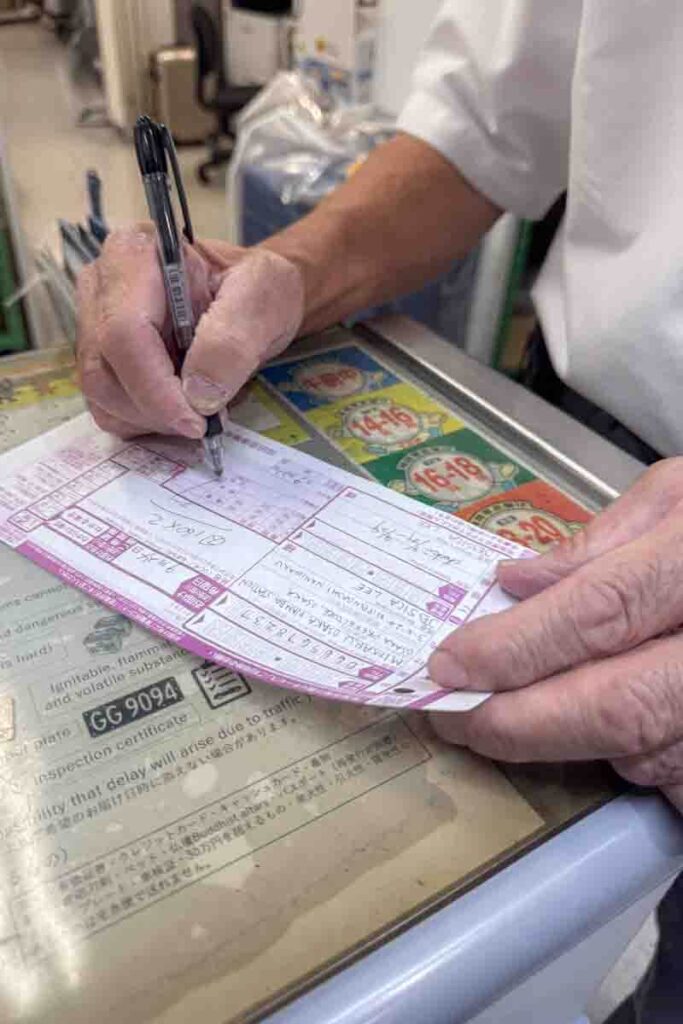
At Hotels
If you’re staying at a hotel, arranging a pickup is even easier. Most hotels in Japan partner with Yamato and handle the transfer directly through the front desk.
You’ll simply:
- Tell them where and when you want to send your bags.
- Fill out a short form (or scan a QR code if they use the online system).
- Leave your bags at the front desk before the daily pickup time (usually in the morning).
The hotel staff will tag and hand them off to Yamato for you. You don’t need to wait around for pickup.
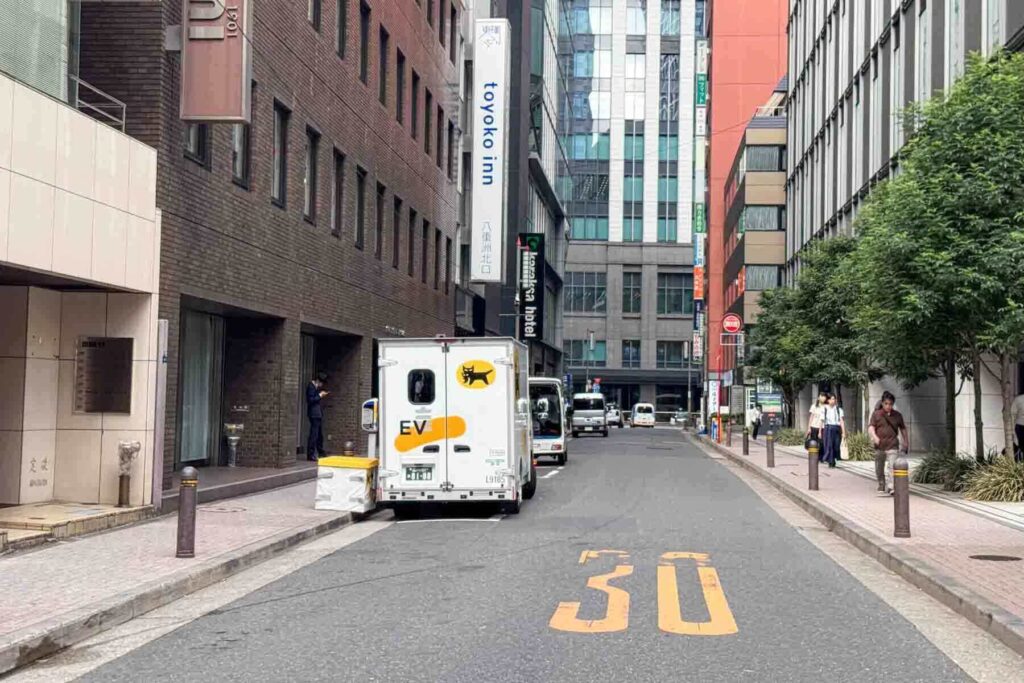
At Convenience Stores
Many 7-Eleven and FamilyMart stores also offer takkyubin drop-off. This is helpful if you’re staying in an Airbnb or a smaller guesthouse without a front desk. Just bring your luggage, ask for takkyubin service, and fill out the same form.
Delivery options and timing are the same, and staff can help point you to the correct counter if you’re unsure.
Packing and Planning Tips for Using Japan’s Luggage Delivery Service
Using Yamato changed the way I packed for our Japan trip. Once I realized we wouldn’t see our larger suitcases for a day or two after sending them off, I started planning our packing differently.
1. Pack an “Essentials” Bag
I kept one small suitcase and our daypacks with us at all times. Inside, I packed:
- Important documents
- 2–3 outfits for everyone
- Pajamas
- Toiletries and medications
- Chargers, electronics, and camera gear
- Snacks and small toys for the kids
- Anything we’d need for the flight, train rides, or the first two nights
That one small suitcase plus everyone’s backpacks was more than enough to get us through a couple of nights comfortably.
2. Forward the Bulkier Stuff
The large suitcases held everything else—extra clothes, shoes, laundry accessories, and souvenirs. Those were the bags I sent with Yamato. I didn’t need them right away, and it was such a relief not having to push or carry them or unpack and repack more stuff.
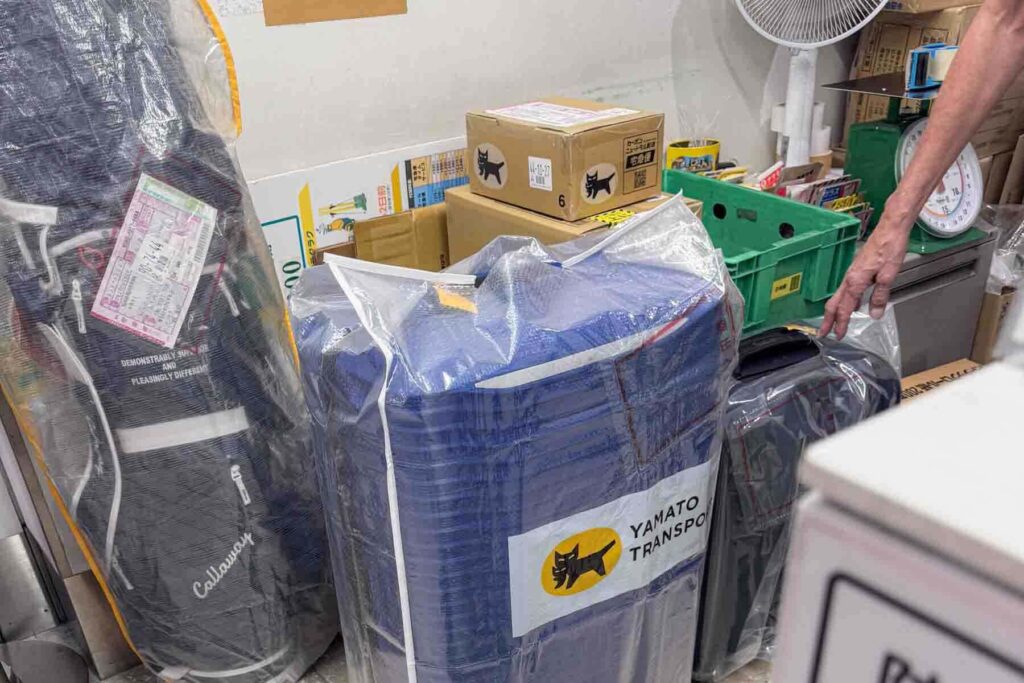
3. Think About Timing
Yamato usually delivers next-day within Japan, but it really depends on when you drop off your baggage and how far you’re forwarding it. Sending bags to the airport can take longer since there are extra logistics they have to deal with. Make sure to buffer in extra time, just in case.
4. Coordinate with Your Hotel
If you’re staying at multiple hotels, check in advance that each property accepts luggage delivery. Almost every major hotel in Japan does, but smaller inns or Airbnbs may not. The staff can also help you fill out the forms and print shipping labels.
5. Adjust for Short vs. Long Stays
After trying it once, I found a rhythm that worked well for our family. Depending on how and what you pack, and need with you, you may want a different cadence.
- Short stays (1–3 nights): Travel light with backpacks and one small suitcase.
- Longer stays (4+ nights): Have all our luggage delivered so we can fully unpack, settle in, and do laundry.
It became a seamless part of our trip. Traveling through Japan without all that baggage was one of the best decisions we made.
6. Understand your Pickup Location
Ensure you clearly understand your pickup location and time for your suitcase delivery, especially if it is being delivered to an airport. There are several terminals, international versus domestic, north wing versus south wing, and more distinctions. There are several Yamato and other baggage delivery counters, and you want to make sure you know exactly where to go to pick up your bags.
Every time we had our bags delivered to an airport, they gave us a sheet with a map and details about which section of the airport and where the counter is located for pickup. We never had any trouble finding it.
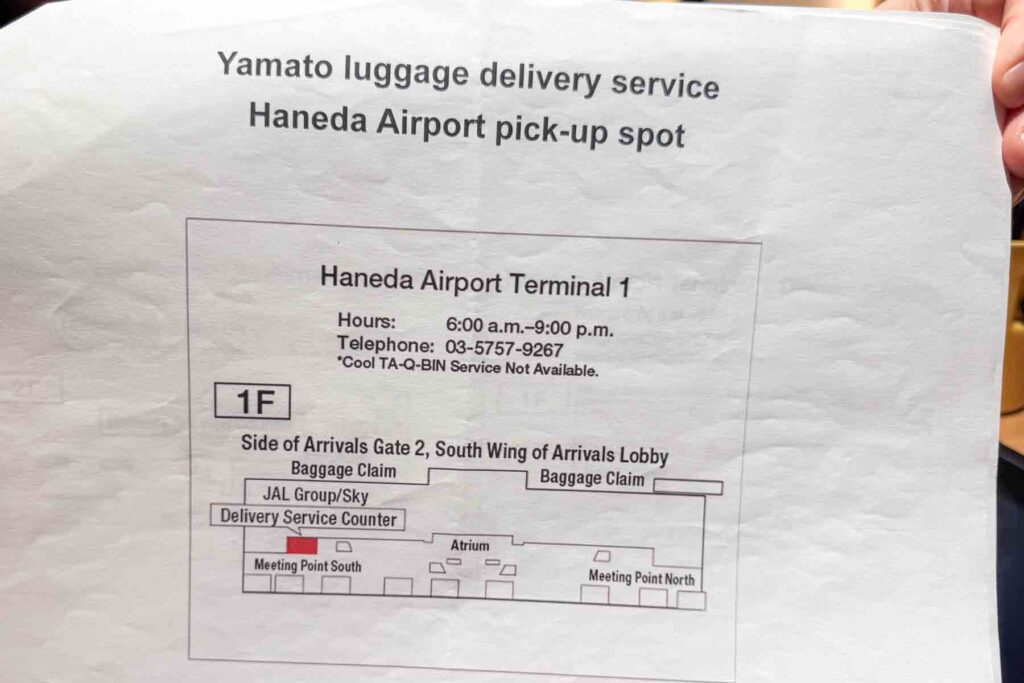
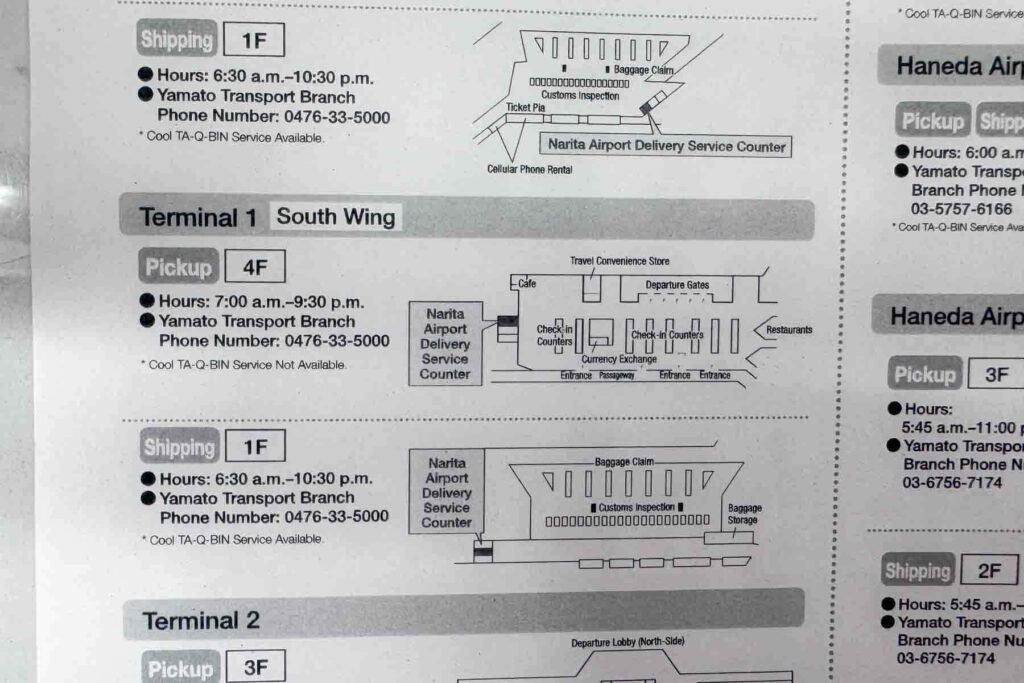
Costs and Delivery Timing
Japan’s luggage delivery services are surprisingly affordable, especially for the convenience they offer. Prices vary slightly by distance and suitcase size, but most transfers fall between ¥2,000–¥3,000 per suitcase (about $13–$20 USD at current exchange rates). Whether you will pick up your bags right away or need them held for a day or two will also impact costs.
For reference, our transfers (of two large suitcases) from Narita to Osaka and Osaka to Haneda cost approximately $50 USD. From Haneda to Narita, we forwarded one large suitcase and one small suitcase. While this was less luggage and the closest in distance, it cost about $65 because they were holding our bags for a couple of days.
You can pay by cash, IC or credit card.
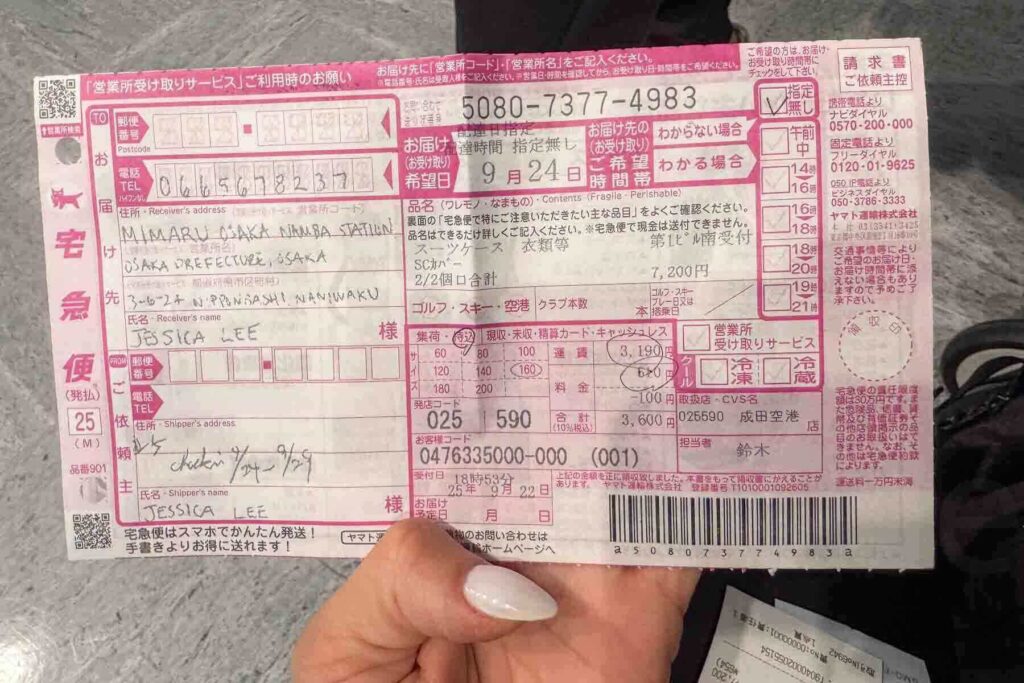
Typical Delivery Times
- Same-day delivery: Available for shorter routes within the same region if you drop off early in the day.
- Next-day delivery: Most common for city-to-city routes (like Tokyo to Osaka).
- Two-day delivery: For longer routes or deliveries to remote areas such as Okinawa or Hokkaido.
At the counter, the staff will tell you the exact arrival date and time window, and you can even track your luggage using the Yamato Transport tracking page (the link is printed on your receipt).
Worth Every Yen
When you think about the time, stress, and physical effort it saves—especially when wrangling kids, strollers, and snacks—it’s easily worth the small cost. We budgeted a few thousand yen per transfer, and it became a non-negotiable part of how we moved between cities.
Why Yamato Stands Out
After using Yamato several times, I completely understand why it’s Japan’s most trusted luggage delivery company. The entire system runs with the kind of precision and care Japan is famous for. Every step felt easy and dependable, from the attention to detail, the care with which they handled our baggage, clear labeling, and on-time delivery.
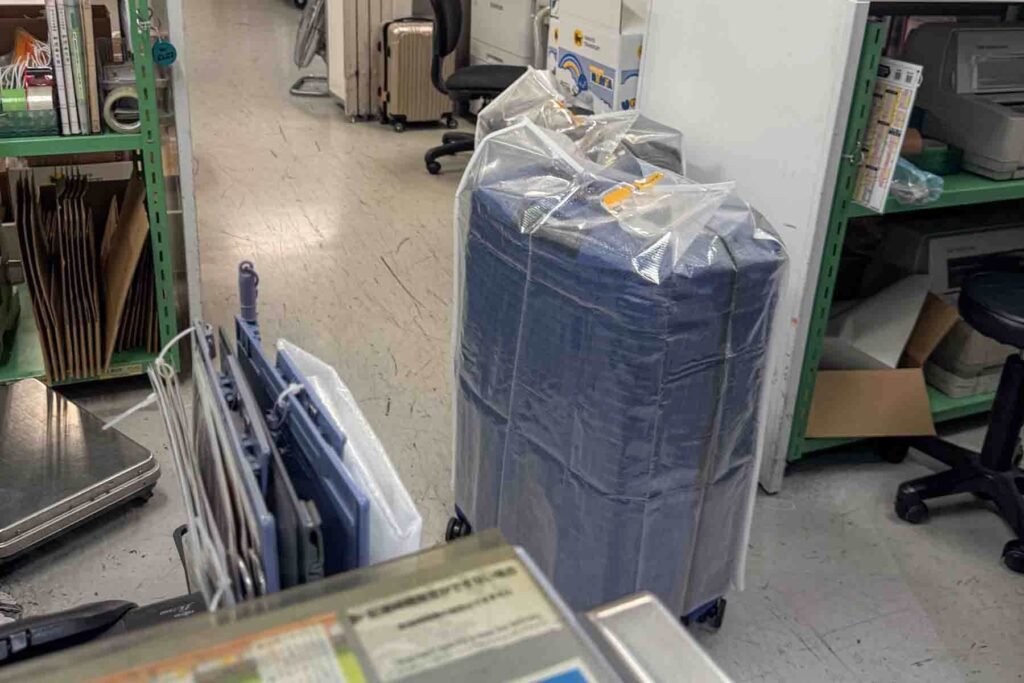
The Yamato Transport logo, a black cat carrying a kitten, is more than just adorable branding. In Japan, black cats are considered symbols of good luck and prosperity, not bad luck like in the West. Once we noticed the logo, it turned into a fun family game spotting Yamato trucks and signs across Japan.
We also saw how seamlessly Yamato connects with everyday Japanese life. Counters are at every major airport, most hotels work with them daily, and their staff are some of the most polite and efficient people we’ve encountered while traveling.
They even have a mini operation where kids can practice being a Yamato worker at KidZania Tokyo and KidZania Koshien. Even when language barriers popped up, a smile, a few gestures, or a quick translation app made everything smooth.
After our first transfer, I stopped worrying about whether our bags would make it. I just trusted that they would be there—and they always were.
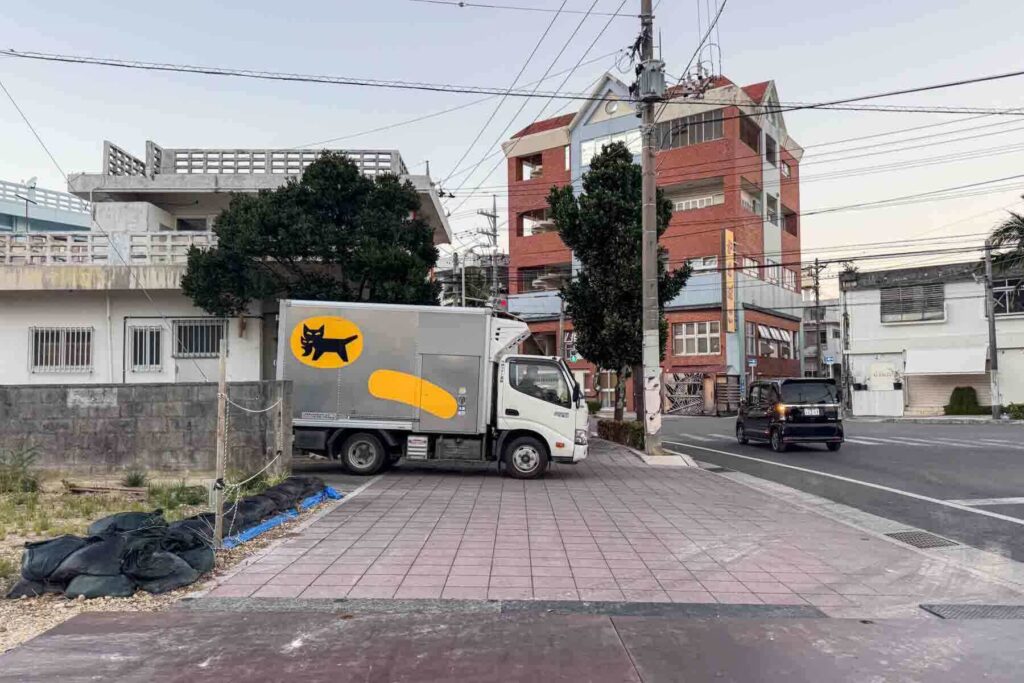
Who This Service Is Best For
Japan’s luggage delivery service is designed for convenience, but certain travelers will benefit from it the most. After using Yamato throughout our trip, here’s who I’d especially recommend it for:
Families Traveling with Kids
Parents already have enough to juggle. The last thing you need is to haul multiple suitcases through busy train stations. Sending your luggage ahead means you can focus on your kids instead of your bags.
Mobility Limited Travelers
For anyone with an injury, special condition, or mobility challenges, using luggage delivery can help you manage a trip to Japan more easily.
Travelers on Multi-City Itineraries
If you’re visiting several cities like Tokyo, Osaka, and Kyoto, luggage forwarding makes transitions effortless. It’s ideal for travelers using the Shinkansen or local trains between destinations.
Anyone Flying Into and Out of Different Airports
We flew into Narita and out of Haneda, and being able to forward our bags between airports made things incredibly simple. You can even send luggage from one airport to another or from a hotel directly to your departure terminal.
Those Who Want to Travel Light
Even if you’re not traveling with kids, the freedom of walking through stations or sightseeing without heavy bags is worth every yen. It’s one of those luxuries that’s surprisingly affordable.
Once you’ve experienced Japan’s luggage delivery system, it’s hard to imagine traveling there any other way.
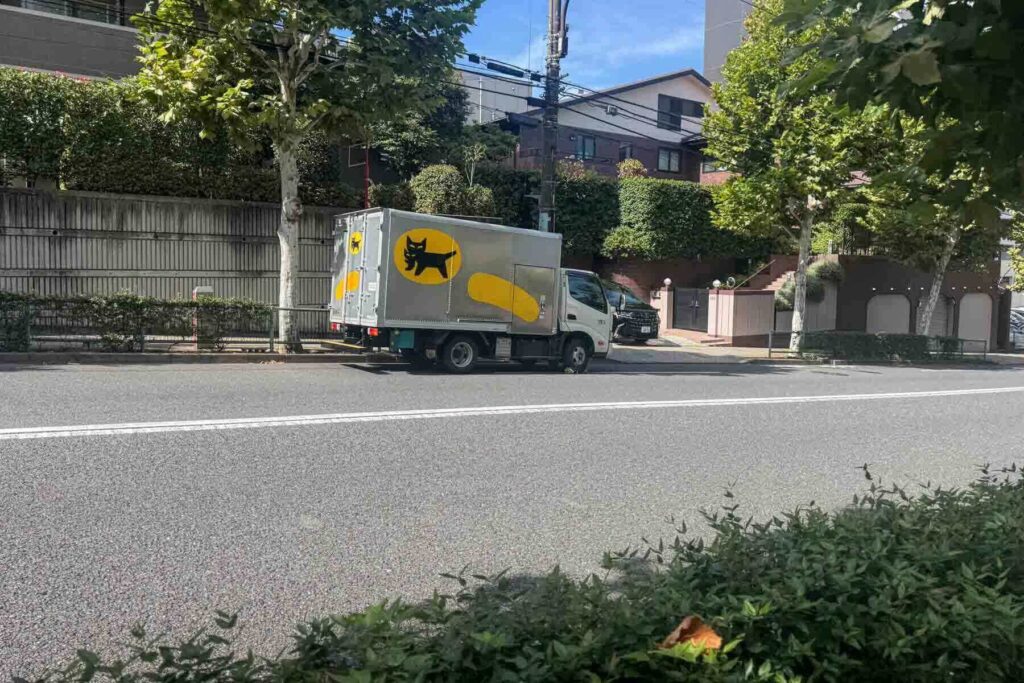
Our Takeaway: A Japan Travel Hack Worth Using
By the end of our trip, I couldn’t believe how much smoother traveling through Japan felt once we stopped dragging our luggage everywhere. Especially when comparing to a previous trip to Japan when we changed hotels four times with a baby, and one of our suitcases’ wheels broke. Not fun!
What started as a test run became one of the best choices of our entire trip.
Using Yamato’s luggage delivery service freed us up to actually enjoy the journey which can often be just as fun and impactful as the destination.
It did take a bit of planning at first, especially figuring out what to pack in our smaller bags versus what to send ahead. But once I got the rhythm down, I couldn’t imagine doing it any other way.
Now I’m just waiting for other countries to catch up so we can experience this effortless travel in more places!
For families or anyone planning to travel across Japan, this is a hack worth building into your trip. It saves time, energy, and stress—and gives you a glimpse into the kind of thoughtful efficiency Japan is known for.

